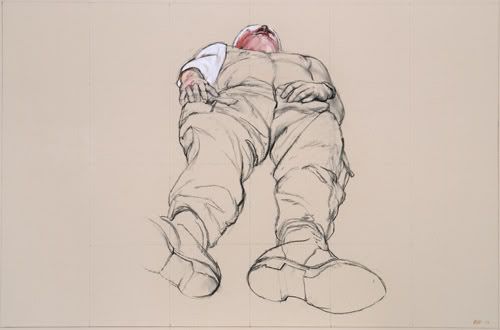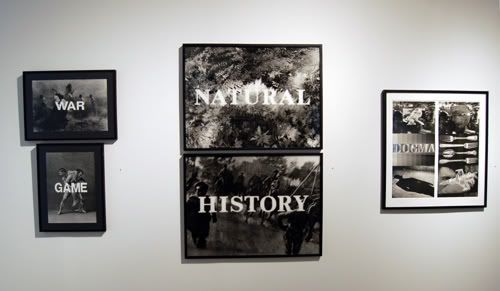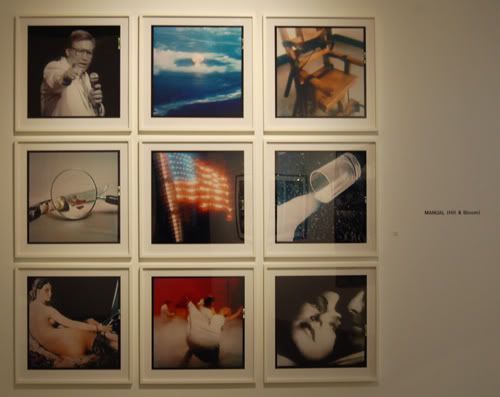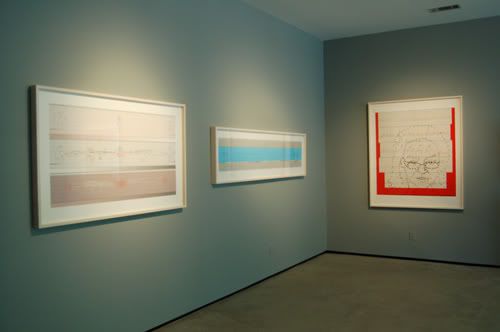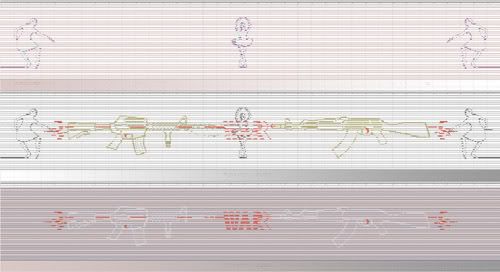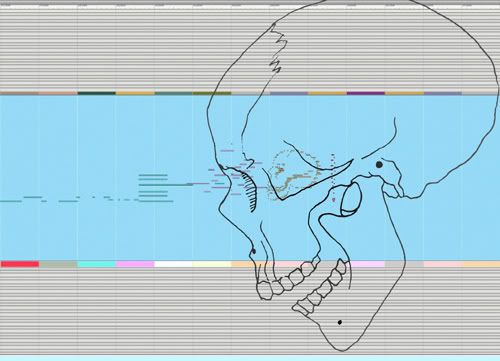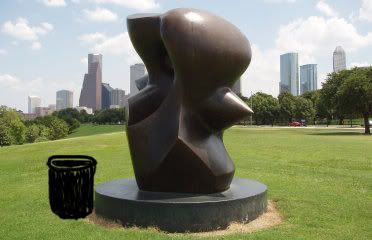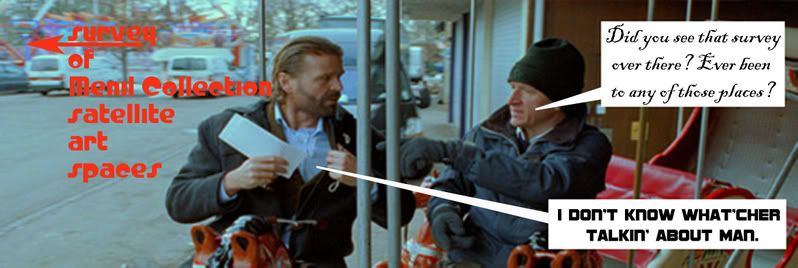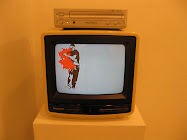Heading out to the Menil tonight? The Otabenga Jones opening will bring out all the suits and slummers; here's a little relevant local history to peruse in the meantime.
A 'police riot' took place at Texas Southern University (TSU) in 1967. Rev. William Lawson wrote the following: "It has been called a 'riot' but most of the ingredients of riot are absent. There is no evidence of looting. There are no noticeable attempts at repetition. There was not even wide-spread resistance to arrest even though brutality by police was painfully obvious.
"Yet for some reason the full concentration of police power was sent to a college campus and ordered to attack its dormitories like an enemy village. One man died, at least three were wounded by gunfire, scores of others were injured by the police. One dormitory was so plundered as to render it unfit for residence. 489 college students were arrested – the largest mass arrest in the city . . ."
After the incident, Houston SNCC members were charged with murder. It was discovered that the policeman killed at the 'riot' was the result of gunfire coming from other policemen.
This incident motivated SNCC organizers to increase their organizing efforts throughout Texas. Houston, at the time, was known as one of the most racist cities in Texas, and one in which open violence against blacks was the rule.
In quoting James Q. Wilson, Carmichael and Hamilton (1967), in Black Power said: "When faced with demands from black people, the multi-faction whites unite and present a common front. This is especially true when the black group increases in number, ". . . a large Negro population is politically both an asset and a liability. A large Negro populace may not only expect to influence the commitments and behavior of a governor, but it also may expect to arouse the fears of many whites. The larger the Negro population, the greater the perceived threat and thus the greater the resistance to broad civil rights laws."
from Aframnews
On July 26, 1970, Carl Bernard Hampton, was slain by the Houston Police Department's Central Intelligence Division (CID). At the age of 21, Carl was a tireless organizer for the People's Party II, modeled after the Black Panther Party.
Dowling Street was known for its illicit activities of alcohol, drugs, prostitution and killings within the Third Ward. It all began on a hot and humid summer afternoon, July 17, 1970.
Upon arriving and stepping out of the car, he noticed two uniform patrolmen harassing a young man selling the Black Panther Newspaper in front of the Headquarters. Carl approached the officer wearing an unconcealed .45 automatic pistol strapped across his chest in a shoulder holster (legal at that time). The police officer, startled at seeing a young Black man openly wearing a pistol, confronted Carl as to why he was wearing a gun. Carl responded by telling him he had a constitutional right to bear arms. The officer reached for his gun, Carl instinctively drew his gun from his holster, beating the police to the draw.
At that same moment, two members in the community center emerged with weapons to join in the confrontation. The driver of the patrol car quickly radioed for back up.
It was a standoff, and it would only be minutes before the area would be sealed off by police reinforcements. Carl and the other members cautiously barricade themselves at the back of the office. They could see increasing police presence, dressed in riot gear escalating tensions. A officer of Houston Police Dept. entered the office in an unsuccessful attempt to negotiate surrender.
Rather than be taken to jail, Carl felt his chances would be better out on the street, having his lawyer negotiate terms for surrender. The negotiating officer quickly exited the doors after seeing no sign of compromise.
Meanwhile, a large crowd of people began to congregate in front of the office. They offered themselves as a shield between the PPII members and the police. The crowd dared police to fire on PPII Headquarters and the police not know how to properly deal with it. They decided to retreat and develop a contingency plan; this was followed a sense of victory in the peoples' ability to back down the HPD.
By this time, most of Houston became aware of the standoff between PPII and HPD; from all over the city's Black communities poured into the 2800 block of Dowling Street to offer support. Many men brought weapons, mothers and sisters came with prepared food to offer the defiant PPII.
Days wore on, and everyone had become fatigued, tense and weary. Also waiting and observing conditions, the Houston Police Dept. and intelligence agencies made a decision to use a well planned military maneuver to assassinate Carl.
On day 10, Sunday July 26, several officers armed with high-powered telescopic rifles secretly gained access to the roof of St. Johns Baptist Church. The tallest building on the block, it would provide the tactical advantage to hold off any return fire. As nightfall approached, Carl was speaking to a crowd of about 100 people at a spontaneous rally in front of the office to raise bail money for two brothers who were arrested earlier.
A car sped by with two women in it shouting out that men were shooting from the roof of the church. Carl asked Roy Bartee Haile and armed members of JBRL (a white militant allied with the PPII who came out to the scene shortly after hearing about the standoff) if any of his members were on top of the church. Upon finding out that it was not JBRL people, Carl picked up a M-1 carbine rifle and proceeded to investigate.
Several people accompanied him. As he attempted to cross the street to get a better look, Howard Dupree, a white news reporter for radio station KULF on the church roof, pointed him out to the snipers. The conspirators shot Carl several times in the stomach and chest with (illegal) hollow point bullets. A very courageous sister dragged Carl to her car and rushed him to Ben Taub Hospital in a futile attempt to save his life. It was there in the emergency room that he died.
Several hundred riot-gear equipped police sealed off a 10 square block radius and swept through the area. Throughout the night and into the dawn, over sixty people were arrested and detained for questioning. "By making the Supreme Sacrifice and Surrendering his life to the Revolution, Carl became a martyr for our inevitable liberation."


